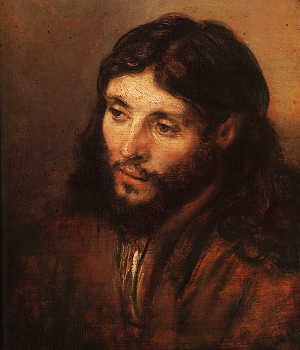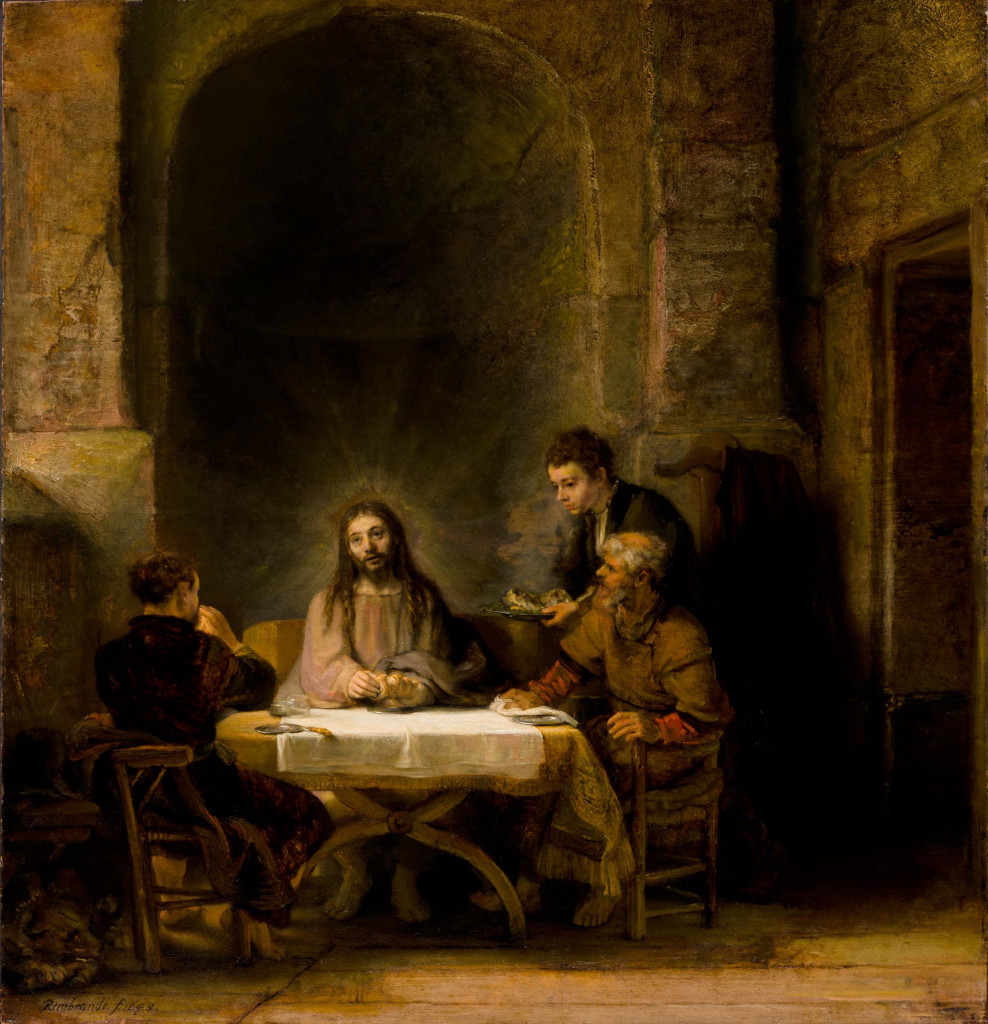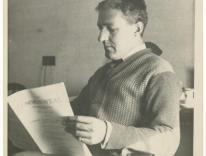Sometime around 1993 (I remember it was my first year of high school), the singer Joan Osborne had a hit song One of Us. At one point in the song, Osborne sang
If god had a face,
What would it look like,
And would you want to see,
If seeing meant that you would have to
Believe in things like heaven, and in Jesus and saints,
And all the prophets.
If I remember correctly, the song was an especially big hit among young Evangelicals, although their interest in Osborne was short lived after it became clear that Osborne was not particularly interested in Christianity. As a top 40 hit in the days before Spotify and iTunes and Napster, the song was catchy enough. (I'd take the Fleet Foxes or Wilco over Joan Osborne any day.) I don't know what happened to Osborne's career after that.
Of course, Christianity makes the startling -- and, to some, blasphemous -- claim that God does have a face. But Osborn's question remains: what did this face look like? A show currently up at the Philadelphia Museum of Art presents one artist's answer.
Rembrandt van Rijn (1606-1669) was born in Leiden in the Netherlands, and in 1631 he moved to Amsterdam. In 1639 he moved again in Amsterdam, this time to Vlooienburg neighborhood, which was home to Sephardic and Ashkenazi Jewish communities. This move was to have profound implications for understanding what God's face looked like and how Christians understand Christ. As the exhibition points out, artists before Rembrandt tended to depict Christ based on three sources: the Mandylion, the image that according to Syriac legend Jesus sent to King Abgar; the Veil of Veronica; and the apocryphal Lentulus letter. Rembrandt broke with this tradition, but did so in a way that was arguably more traditional.
Unlike those artists before him, Rembrandt used a live model for his portraits of Christ. And the live model he used was Jewish. Jesus, son of David, son of Abraham, was a Jew. Rembrandt looked to his neighbors who were also sons of David and sons of Abraham to imagine Jesus face. Jesus' Jewishness comes through in two distinct ways. The exhibition has a series of small paintings all eight inches by eleven inches of what Rembrandt calls Heads of Christ, which he painted between 1648 and 1649. Each represents Jesus face turned slightly. Christ has a brown beard, brown hair almost to his shoulders, and piercing brown eyes. Rembrandt achieves dramatic effect with the way he casts light on Christ's face. The illumination focuses the viewers attention on Christ's gaze. This gaze allows us to imagine Christ's emotions. Some paintings seem to represent sadness, others joy or concern. According to the audio guide, these faces represent a Jesus who loves. All the paintings show a deep humanity, and all bear a striking resemblance to Rembrandt's Portrait of a Young Jew from 1648.
To be human is to participate in a cultural context, and we see another aspect of Jesus Jewishness in the Supper at Emmaus of 1648. The painting depicts the central moment in the story (found in Luke 24:30) when Jesus blesses the bread he is eating with his disciples, breaks it, and gives it to them. The next verse reads: "And with that their eyes were opened and they recognized him, but he vanished from their sight." One disciple has his hands folded in prayer, and the other stares intently at Christs face. The waiter, who has presumably never heard of Jesus, goes about serving. The bread Jesus breaks is challah. For Rembrandt, Jesus and his disciples must have been eating Jewish bread. (There is a small print in a book in the exhibition that shows the disciples just after Jesus has disappeared. Most unfortunately the original Rembrandt painting has been lost.) I wish the exhibition had explained a bit more about Rembrandt's cultural, artistic, and theological context. It made a bit too much about how Rembrandt broke from the Byzantine icon tradition, and in so doing set up a too neat distinction between the godly icon and the human Jesus that Rembrandt paints. (We see plenty of humanity in paintings of Christ before Rembrandt.) Yet these are minor quibbles. If you needed yet another reason to visit Philadelphia, you should come to see this exhibition. It is open through October 30. In seeing it, youll see what Rembrandt believed to be God's face. As I left, pondering Jesus modeled on a Jewish man who lived in Holland in the middle of the seventeenth century, I couldn't help but think of the last line of Herbert McCabes famous sermon on the genealogy of Christ. "He belonged to us, and came to help us, no wonder he came to a bad end, and give us some hope."
I wish the exhibition had explained a bit more about Rembrandt's cultural, artistic, and theological context. It made a bit too much about how Rembrandt broke from the Byzantine icon tradition, and in so doing set up a too neat distinction between the godly icon and the human Jesus that Rembrandt paints. (We see plenty of humanity in paintings of Christ before Rembrandt.) Yet these are minor quibbles. If you needed yet another reason to visit Philadelphia, you should come to see this exhibition. It is open through October 30. In seeing it, youll see what Rembrandt believed to be God's face. As I left, pondering Jesus modeled on a Jewish man who lived in Holland in the middle of the seventeenth century, I couldn't help but think of the last line of Herbert McCabes famous sermon on the genealogy of Christ. "He belonged to us, and came to help us, no wonder he came to a bad end, and give us some hope."


